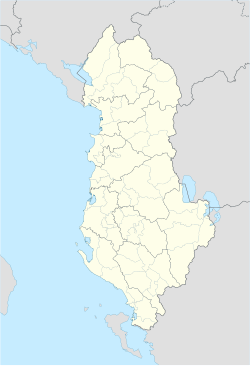Zogaj, Shkodër: Difference between revisions
Appearance
Content deleted Content added
No edit summary Tag: Reverted |
m Reverted edits by 2A02:A45B:F897:1:998C:19CB:7A1:89A1 (talk) to last revision by J budissin: nonconstructive edits |
||
| Line 24: | Line 24: | ||
|website = |
|website = |
||
}} |
}} |
||
'''Zogaj''' is a [[Human settlement|settlement]] in the [[Shkodër]] municipality, [[Shkodër County]], northwestern [[Albania]] on the shore of [[Lake Skadar|Lake of Shkodër]].<ref>[http://www.geonames.org/search.html?q=Zogaj%2C+Shkoder&country=AL Location of Zogaj,Shkodër ]</ref> The village is very close to the [[Border crossings of Albania|border]] with [[Montenegro]]. It was mentioned as ''Zagagni'' by [[Mariano Bolizza]] in 1614, being part of the [[Sanjak of Scutari]]. It was Roman Catholic, had 25 houses, and 50 men at arms commanded by Alla Andrà. |
'''Zogaj''' is a [[Human settlement|settlement]] in the [[Shkodër]] municipality, [[Shkodër County]], northwestern [[Albania]] on the shore of [[Lake Skadar|Lake of Shkodër]].<ref>[http://www.geonames.org/search.html?q=Zogaj%2C+Shkoder&country=AL Location of Zogaj,Shkodër ]</ref> The village is very close to the [[Border crossings of Albania|border]] with [[Montenegro]]. It was mentioned as ''Zagagni'' by [[Mariano Bolizza]] in 1614, being part of the [[Sanjak of Scutari]]. It was Roman Catholic, had 25 houses, and 50 men at arms commanded by Alla Andrà. |
||
==References== |
==References== |
||
Latest revision as of 09:15, 6 April 2021
Zogaj | |
|---|---|
Settlement | |
 Coast of Lake Scutari in Zogaj | |
| Coordinates: 42°4′15″N 19°23′57″E / 42.07083°N 19.39917°E | |
| Country | |
| County | Shkodër |
| Municipality | Shkodër |
| Municipal unit | Shkodër |
| Time zone | UTC+1 (CET) |
| • Summer (DST) | UTC+2 (CEST) |
| Postal Code | 4007 |
Zogaj is a settlement in the Shkodër municipality, Shkodër County, northwestern Albania on the shore of Lake of Shkodër.[1] The village is very close to the border with Montenegro. It was mentioned as Zagagni by Mariano Bolizza in 1614, being part of the Sanjak of Scutari. It was Roman Catholic, had 25 houses, and 50 men at arms commanded by Alla Andrà.
References
[edit]

